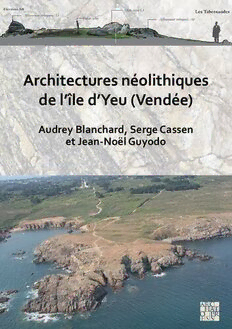
Architectures néolithiques de l’île d’Yeu (Vendée) PDF
293 Pages·2021·87.245 MB·French
Most books are stored in the elastic cloud where traffic is expensive. For this reason, we have a limit on daily download.
Preview Architectures néolithiques de l’île d’Yeu (Vendée)
Description:
Architectures neolithiques de l'ile d'Yeu (Vendee) gathers documentation, unpublished material and the principal results of studies, prospections, excavations and surveys carried out on domestic settlements, funeral monuments, quarries and symbolic sites. Situated off the Atlantic coast of the Vendee (France), the Isle of Yeu has been occupied since Prehistory. Domestic, industrial, funerary or symbolic sites dating from the Neolithic are numerous. Their state of conservation is exceptional, with much of the stone-built architecture preserved above ground. This is notably so for the walled enclosures of the fourth millennium BC, which have been the subject of several research programs since 2010. The initial chapters propose an inventory of the mineral resources as well as the main forms of exploitation, supply strategies and uses of stones. The main part of the volume is dedicated to the excavation of the two principal walled enclosures dating from the late Neolithic, the Pointe de la Tranche and Ker Daniaud. The emphasis is on the architecture of these promontory forts that directly open to the Ocean but whose occupation seems not to have been permanent. Finally, the surveys (plan, photogrammetry, microtopography) and the digital modelling of the megalithic burials of the Tabernaudes, the Plauche a Puare and the Petits Fradets allow a three-dimensional reconstruction of Neolithic funerary architectures. For the rocks marked by cupules, the current concentration of which is one of the most important (more than 120 sites), a first analysis of the corpus of signs is proposed, although their dating remains uncertain. This contribution allows us to open a window on the material and imaginary worlds of one population from the end of Prehistory, through the analysis of their testimonies and expressions, physical and symbolic, revealing a people settled - and not trapped - in a restricted territory beaten by the winds and surrounded by the waves.
See more
The list of books you might like
Most books are stored in the elastic cloud where traffic is expensive. For this reason, we have a limit on daily download.
